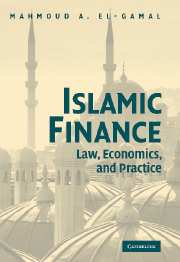Book contents
- Frontmatter
- Contents
- List of Illustrations
- Preface
- Glossary and Transliteration
- 1 Introduction
- 2 Jurisprudence and Arbitrage
- 3 Two Major Prohibitions: Riba and Gharar
- 4 Sale-Based Islamic Finance
- 5 Derivative-Like Sales: Salam, Istisna', and 'Urbun
- 6 Leasing, Securitization, and Sukuk
- 7 Partnerships and Equity Investment
- 8 Islamic Financial Institutions
- 9 Governance and Regulatory Solutions in Mutuality
- 10 Beyond Shari'a Arbitrage
- Conclusion
- Notes
- Bibliography
- Index
4 - Sale-Based Islamic Finance
Published online by Cambridge University Press: 06 July 2010
- Frontmatter
- Contents
- List of Illustrations
- Preface
- Glossary and Transliteration
- 1 Introduction
- 2 Jurisprudence and Arbitrage
- 3 Two Major Prohibitions: Riba and Gharar
- 4 Sale-Based Islamic Finance
- 5 Derivative-Like Sales: Salam, Istisna', and 'Urbun
- 6 Leasing, Securitization, and Sukuk
- 7 Partnerships and Equity Investment
- 8 Islamic Financial Institutions
- 9 Governance and Regulatory Solutions in Mutuality
- 10 Beyond Shari'a Arbitrage
- Conclusion
- Notes
- Bibliography
- Index
Summary
As noted in earlier chapters, nominate contracts in classical Islamic jurisprudence play a very prominent role in contemporary Islamic finance. This prominence is in large part a function of the common-law nature of Islamic jurisprudence. Contemporary jurists are generally reluctant to declare that a contemporary financial practice is permissible under Islamic law, even though the default rule in transactions is permissibility. Thus, jurists seek precedents in classical jurisprudence to justify proposed contemporary practices.
To illustrate, consider the Chapter 1 example of conventional mortgage loan transaction and the Islamic version based on murabaha financing. Background credit checks, and other financial considerations to determine whether or not credit should be extended to a particular customer, are identical in both settings. Indeed, the mark-up charged to a customer under the Islamic model can be determined based on the customer's credit rating and benchmarked to interest rates on potential conventional loans to the customer. The main difference between conventional and Islamic financing procedures is thus inherent in the contracts used.
In the case of conventional mortgage lending, the bank collects principal plus interest on debt documented as a loan. In contrast, the murabaha model of Islamic finance is predicated on the permissibility of charging a credit price that is higher than the spot price of a property. Thus, the Islamic bank collects principal plus interest on debt documented as a credit price. As noted previously, the price mark-up can mimic conventional interest rates, and indeed the amortization table for a murabaha financing facility may be identical to the corresponding table for a mortgage loan. However, the murabaha financing return on capital is characterized rhetorically as profit or price mark-up in a sales transaction rather than interest on a loan.
- Type
- Chapter
- Information
- Islamic FinanceLaw, Economics, and Practice, pp. 64 - 80Publisher: Cambridge University PressPrint publication year: 2006



